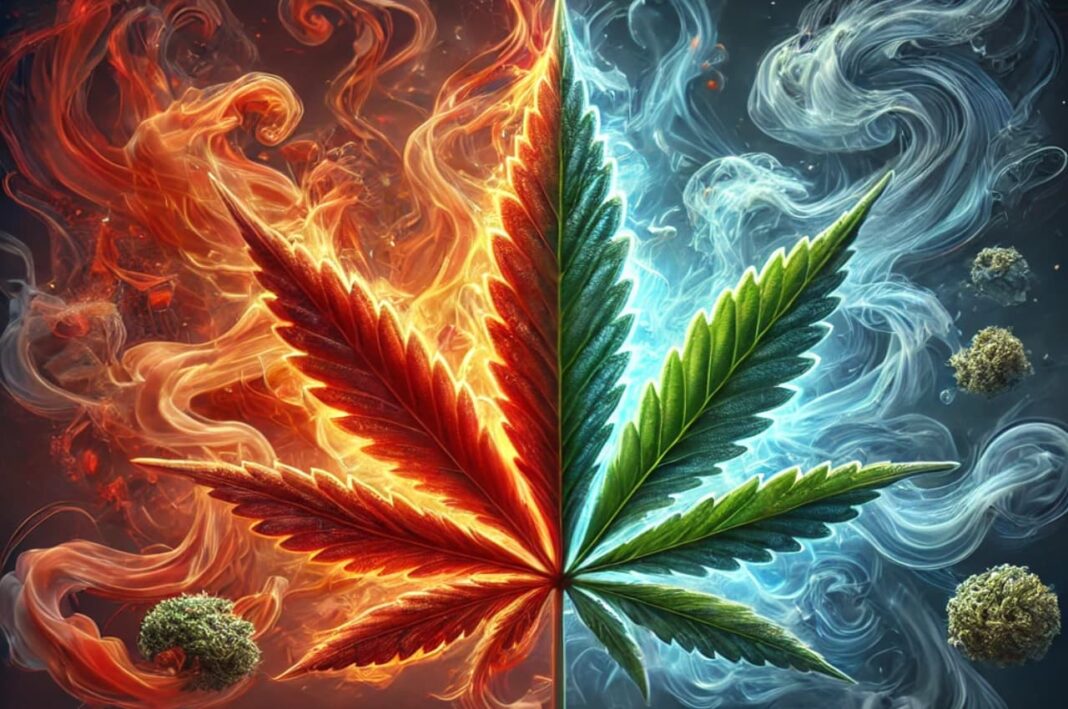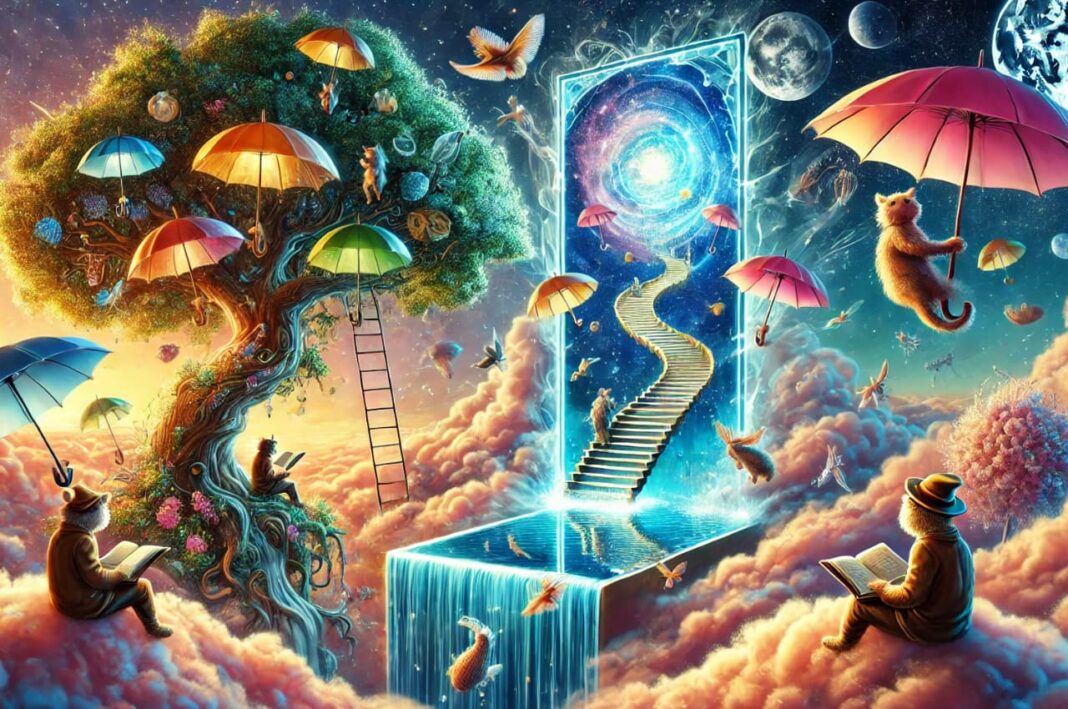Cannabis has entered the mainstream. From health applications to pop culture, the two most famous cannabinoids—THC (tetrahydrocannabinol) and CBD (cannabidiol)—frequently grab the spotlight. But what truly distinguishes them, and why should you care? Whether you’re a curious beginner or a seasoned cannabis enthusiast, this article takes a deep dive into the world of THC and CBD, with a sprinkle of humor to keep it engaging.
Two Sides of the Same Coin?
Imagine THC and CBD as twins. While they share the same family roots, they couldn’t be more different in their behavior. THC is the rebellious sibling, ready to party and push boundaries, while CBD is the calmer, more balanced counterpart, preferring mindfulness and wellness routines. This analogy simplifies their differences, but there’s much more to unpack.
1. The Comparison
Chemical Differences
Both THC and CBD are derived from the cannabis plant and share the molecular formula C₂₁H₃₀O₂. Despite their similarities, their structural variations define how they interact with the human body:
- THC: Its closed-ring structure allows it to bind directly to CB1 receptors in the brain. This interaction leads to psychoactive effects such as euphoria, altered perception, and relaxation.
- CBD: Its open-ring structure prevents a direct bond with CB1 receptors. Instead, CBD modulates receptor activity, indirectly influencing the endocannabinoid system without producing a “high.”
Effects on the Body
- THC: Its effects include a boost in mood, enhanced sensory perception, and increased appetite. Users often experience bursts of creativity or, on the flip side, excessive giggling or introspection. However, THC may also provoke anxiety or paranoia in sensitive individuals.
- CBD: Known for its calming properties, CBD is a go-to for reducing stress, alleviating pain, and managing inflammation. Additionally, it counteracts THC’s potential side effects, offering a balanced experience when used together.
Side Effects
While THC’s effects are enjoyable for some, others may experience negative reactions:
- THC Side Effects: Anxiety, paranoia, dizziness, dry mouth, or increased heart rate.
- CBD Side Effects: Generally mild, including drowsiness, dry mouth, or mild gastrointestinal discomfort when taken in high doses.
2. Applications
Medical Uses
Cannabinoids have become integral to modern medicine. Here’s how they’re utilized:
- THC: Primarily used for chronic pain management, appetite stimulation (especially in patients with conditions like HIV/AIDS), and nausea relief during chemotherapy. It’s also effective in treating muscle spasticity in conditions like multiple sclerosis.
- CBD: Proven to reduce seizures in epilepsy patients, particularly in severe cases like Dravet syndrome. It is a popular choice for treating anxiety, depression, sleep disorders, and chronic inflammatory conditions like arthritis.
Recreational Use
- THC: Favored for its ability to induce a euphoric high, enhance social experiences, and foster creativity.
- CBD: Growing in popularity as a wellness tool, with products ranging from calming tinctures to CBD-infused snacks.
Sports and Recovery
CBD is widely used among athletes for muscle recovery and pain relief. Unlike THC, it doesn’t impair motor function, making it ideal for post-training routines. CBD is often incorporated into topical creams, balms, or gels.
Combined Use: The Entourage Effect
Combining THC and CBD in balanced proportions can amplify their benefits. This synergy, known as the “entourage effect,” allows users to experience enhanced therapeutic outcomes. For instance, CBD can mitigate THC’s psychoactive intensity, creating a more manageable experience.
Veterinary Applications
CBD is gaining traction in veterinary medicine. It’s used to alleviate anxiety, manage chronic pain, and reduce inflammation in pets. Pet owners appreciate it as a natural alternative to pharmaceuticals, especially for conditions like arthritis or separation anxiety.
3. Legal Aspects
Legal Differences Across Regions
Cannabis legality varies widely:
- THC: Regulated due to its psychoactive properties. In many countries, THC is only available through prescription or in legalized recreational markets.
- CBD: Legal in most regions, provided the THC content remains below a specified threshold (usually 0.2–0.3%).
Drug Testing Implications
THC is detectable in drug tests for weeks after consumption, making it risky for individuals in professions subject to regular testing. CBD, however, is not flagged in standard tests unless contaminated with THC.
4. Practical Tips
Product Selection
When choosing THC or CBD products, prioritize the following:
- Certification: Ensure products come from reputable sources.
- Label Transparency: Look for detailed ingredient lists to avoid misleading claims.
- Product Type: Popular formats include tinctures, capsules, edibles, vapes, and topicals. Select based on your needs.
Dosage Recommendations
- THC: Start with microdoses of 2.5–5 mg. Gradually increase based on tolerance and desired effects.
- CBD: Begin with 20–40 mg per day, adjusting based on efficacy and personal comfort.
Storage Tips
To maintain potency, store products in a cool, dark place. Avoid exposure to direct sunlight, heat, and air.
5. Cultural Perspectives
Pop Culture Influence
THC has been a staple in movies and music since the 1970s, often associated with counterculture and humor. In contrast, CBD has carved its niche in wellness and luxury markets, endorsed by celebrities and lifestyle brands.
Historical Roots
Cannabis has been a part of traditional medicine for thousands of years. Ancient Chinese and Ayurvedic practitioners used it for various ailments, blending THC and CBD for their complementary effects.
6. Facts & Myths
Debunking Common Misconceptions
- “CBD gets you high”: False. CBD lacks the psychoactive properties of THC.
- “THC is dangerous”: Misleading. THC’s effects depend on dosage and individual sensitivity.
Scientific Research
Studies highlight THC’s effectiveness in pain relief and CBD’s anti-inflammatory properties. However, ongoing research is essential to uncover their full potential.
7. Innovative Products
The cannabis industry continues to innovate with exciting products like:
- CBD Beverages: Infused waters, teas, and sodas.
- Skincare: Anti-aging creams and serums with CBD for soothing properties.
- Nano-CBD: Enhanced absorption for quicker effects.
Comparison Table
| Feature | THC | CBD |
| Effect | Psychoactive (euphoria) | Non-psychoactive (calming) |
| Use | Recreational & Medical | Primarily Medical/Wellness |
| Side Effects | Anxiety, Paranoia, Dry Mouth | Mild (Drowsiness, Dry Mouth) |
| Legality | Strictly Regulated | Mostly Legal (<0.3% THC) |
Conclusion: A World of Possibilities
Both THC and CBD offer unique advantages tailored to specific needs. Whether you’re exploring CBD’s calming effects or THC’s recreational high, an informed and responsible approach ensures the best experience. Dive into the diverse world of cannabis and discover what suits you best—the possibilities are endless!





